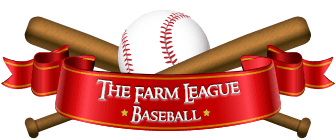Description
Sometimes all you have to do to teach young players is just let them loose on the field and start playing a game. There's no doubt kids get more excited about playing than they do about practicing, so use that excitement to your advantage. Set-up a simulated game and use breaks in the action to teach valuable lessons.
Age Appropriate
Any
Problem
Your players are clearly losing interest in practice, but you still have a lot to teach.
Drill Objective
It's one thing to set-up a scrimmage and just let your team pass the time by playing. Take it one step further by setting up a "simulated game" - here you take control of the game whenever you like, setting up situations that demonstrate what you'd like to teach and letting your players learn through action.
Set-up
Split teams as you would if setting up a scrimmage. Then, create a situation - put runners at first and third, give the batter a 0-2 count, etc. - and let the action play out.
Executing the Drill
Let your team play through a situation once, then ask questions about what happened and why. Give some feedback to your players, and then recreate the same situation.
Now, ask players what they're thinking about before the pitch is thrown in this situation. Who has coverage? What will they do on a groundball? On a fly-ball?
Run through the play again. Now you can really direct each player on what they did well in the situation, what they should be thinking about, and how the team functions as a unit to properly defend in the specific situation you have created.
Advanced
In the video attached to this drill, I discuss the various things I would think about as a shortstop before each play. At the major league level, these variables are endless - I wasn't a player who could get by on pure talent, so I used what I knew about other players and game situations to position myself better on the diamond and give myself a chance to make plays. I would consider the hitter's tendencies, the hitter's count, what the pitcher was
throwing, the condition of the infield, who had coverage on a steal, what the hitter did in his last at-bat, how fast a runner the hitter was, how fast any runners on base were…
The list goes on-and-on.
The simulated game is an effective teaching mechanism at any level, but realize the potential of overwhelming players when you try to apply a major league caliber analysis to your team of 10 year olds. Customize the depth of your analysis to the age group you're coaching.

